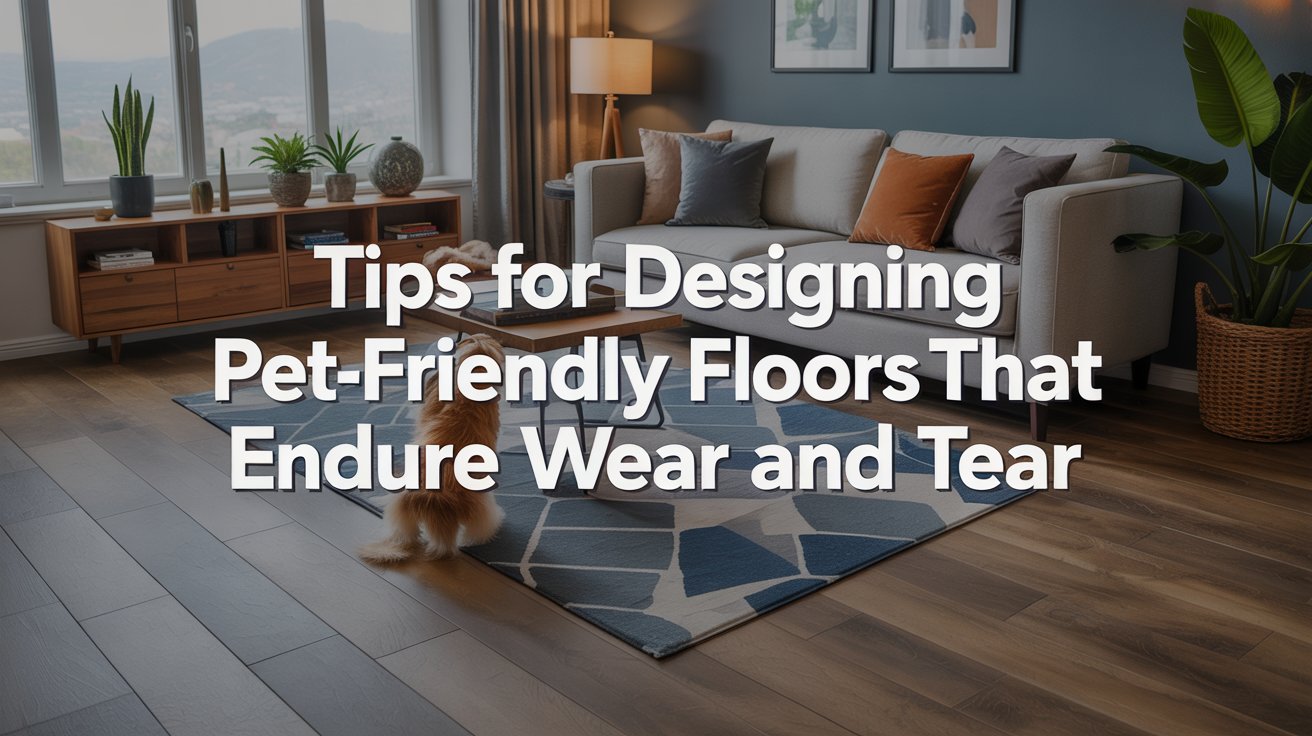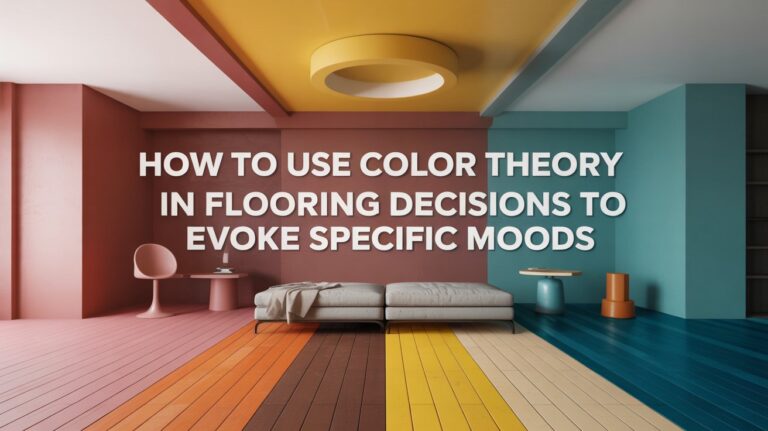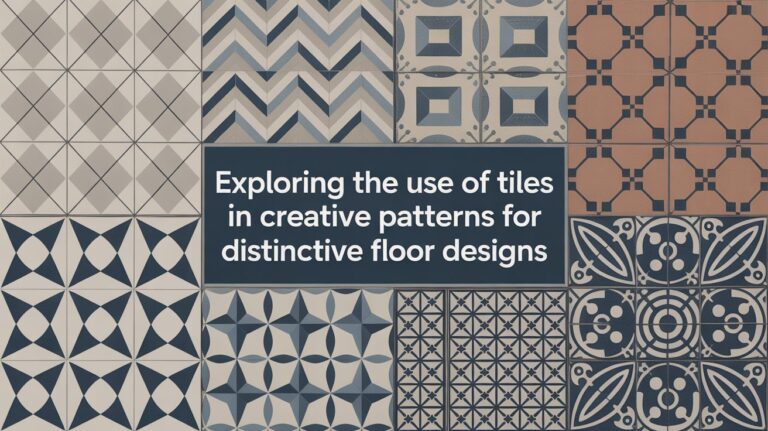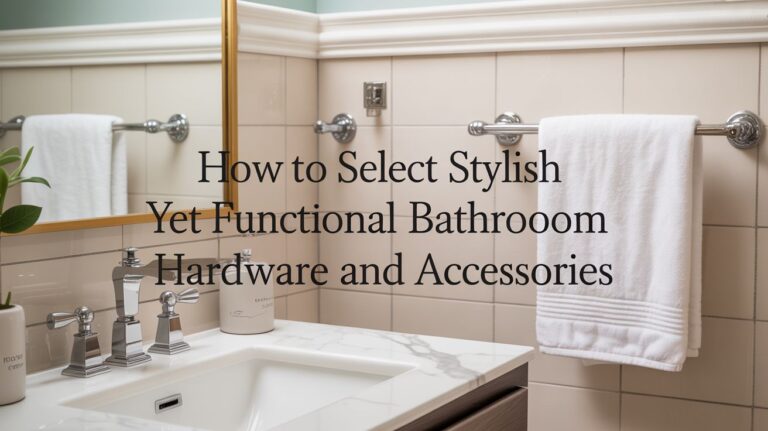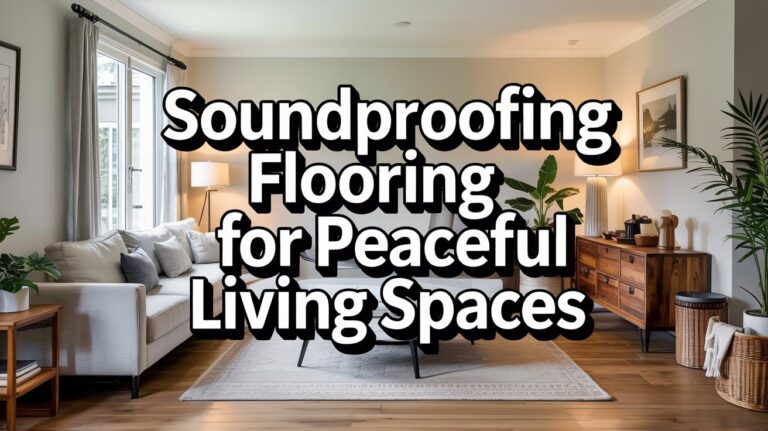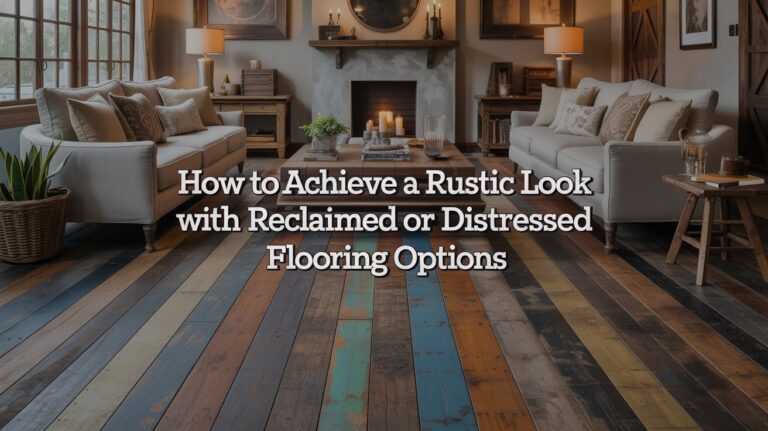Tips for Designing Pet-Friendly Floors That Endure Wear and Tear
I have been, or can be if you click on a link and make a purchase, compensated via a cash payment, gift, or something else of value for writing this post. As an Amazon Associate, I earn from qualifying purchases. Please read my full Affiliate Disclosure for more information.
When designing pet-friendly floors, prioritize durability with scratch-resistant materials like luxury vinyl plank or porcelain tile, plus stain-proof, easy-to-clean finishes. Assess grip to prevent slips in dry and wet conditions, choosing textures that stay grippy after cleaning. Plan for low-maintenance maintenance with sealed seams, minimal grooves, and surfaces that hide hair and dirt. Layer protection in high-traffic zones with runners and durable bases, and tailor choices to your pets and rooms for cohesive style—you’ll uncover more tips below.
Key Takeaways
- Choose wear-resistant materials like luxury vinyl plank, porcelain tile, or composite wood with sealed seams for easy cleaning and durability.
- Prioritize slip-resistant textures (matte finishes, low-gloss) to maintain traction for pets and people in dry and wet conditions.
- Opt stain-resistant, non-porous finishes and minimal grooves to simplify cleaning after accidents or spills.
- Use zone-specific flooring for high-traffic or wet areas, combining durable bases with easy-to-clean topcoats or runners.
- Select colors and textures that hide scratches and hair while coordinating with décor for long-term maintenance.
Choosing Durable Flooring Materials for Pets
When choosing durable flooring for pets, prioritize materials that resist scratches, stains, and moisture while still feeling comfortable underfoot. You’ll want surfaces that handle daily claws and paws without showing wear, yet remain warm and quiet underfoot. Consider wear-resistant hardwood composites, luxury vinyl plank, or porcelain tile with a soft entry mat. For pet stain prevention, choose finishes that resist spills and are easy to clean. Allergy friendly flooring matters if sensitivities exist, so opt low-emission options and sealed seams. Balance aesthetics with practicality: choose colors and textures you enjoy, and prioritize long-term maintenance and cleaning simplicity.
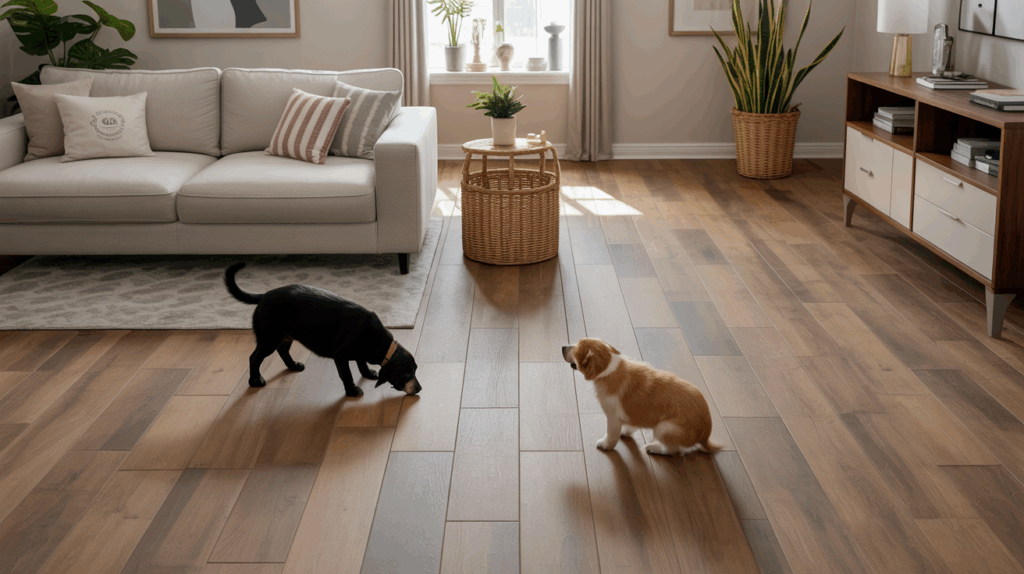
Assessing Grip and Slip Resistance
When you assess grip and slip resistance, start by evaluating traction on various surfaces your pet will encounter, from tile to hardwood to vinyl. Consider how consistent the traction is in both dry and wet conditions, and opt for finishes that minimize sudden slips without sacrificing elegance. Refer to slip-resistance standards to guarantee your chosen flooring balances safety with a refined, cohesive look.
Traction on Surfaces
How can you measure grip and slip resistance on different pet-friendly floors, without overcomplicating the space? You’ll assess traction by testing everyday movements, noting how pets and people respond on each surface.
- Consider pet paw safety when evaluating texture and moisture interaction
- Compare surface texture considerations like matte finishes vs. subtle gloss
- Simulate wet and dry conditions to observe grip changes
- Observe hesitation, skidding, or slippage during quick turns
Choose surfaces that balance traction with ease of cleaning, prioritizing predictable grip for both pets and humans.
Slip-Resistance Standards
Slip-resistance standards set the baseline for how surfaces keep both pets and people stable in everyday moves. You’ll assess grip using test methods that simulate wet, dry, and muddy conditions, focusing on measurable friction values rather than vibes. Prioritize consistent performance across room transitions, doorways, and high-traffic zones to support pet safety without sacrificing comfort. Consider the influence of texture, gloss, and wear patterns on ongoing traction, recognizing that subtle texture changes can impact footing over time. When selecting flooring aesthetics, guarantee the surface maintains grip after cleaning and polishing, preserving safety and style in daily life.
Planning for Easy Cleaning and Maintenance
To plan for easy cleaning and maintenance, start by choosing floor materials and textures that resist dirt and debris and are simple to wipe down or mop.
- Select low-pounce textures that mask hair and debris while remaining smooth to wipe
- Opt stain resistant finishes for spills and pet accidents
- Favor non-porous or sealed surfaces for quick cleanup and fewer grooves
- Plan for accessible seams and edges to minimize dirt buildup and simplify brushing
These choices support pet hair removal, streamline maintenance, and keep rooms visually cohesive while remaining durable and practical.
Layering Protective Options for High-Traffic Areas
In high-traffic zones, layering protective options isn’t optional—it’s essential for longevity and clean aesthetics. You combine a durable base such as stamped concrete, ceramic, or luxury vinyl, with a resilient topcoat or runner to absorb wear. Use area rugs strategically, choosing low-pile, easy-to-clean options that complement your floor’s hue. Incorporate pet scent control by selecting materials with sealed surfaces and quick-clean finishes, then air out rooms regularly. Prioritize aesthetic considerations—textures, tones, and patterns—so protection feels integrated, not industrial. Finally, assess edge and seam protection to minimize chipping, preserving a cohesive, durable look.
Tailoring Floors to Different Pets and Rooms
When you tailor flooring to different pets and rooms, start by matching surface characteristics to each animal’s behavior and the room’s function, then balance practicality with style. You’ll blend pet safety with flooring aesthetics, selecting textures and grain that hide scratches while supporting traction. Consider zone-specific options—hallways, living spaces, and bathrooms—so movement and moisture don’t compromise performance. Align color and finish with your décor, then test under real-use scenarios.
- Pet-friendly textures that resist scuffs
- Non-slip surfaces for safe footing
- Moisture-resistant finishes for wet areas
- Accessible color palettes and pathways
Tips to Balance Durability, Comfort, and Style
Striking the balance between durability, comfort, and style means choosing floors that endure active pets while still feeling good underfoot and looking cohesive with your décor. To achieve this, select surfaces with moderate hardness and springy underfoot, like engineered planks or high-density laminates, paired with well-padded runners in high-traffic zones. Consider color and texture that hide scratches yet reflect your design aims, and sealants that resist moisture. Integrate practical maintenance routines alongside mindful pet nutrition and Veterinary care to keep floors pristine long-term. When choosing finishes, prioritize low-VOC options for healthier indoor air without compromising appearance.
Conclusion
Choosing flooring that stands up to paws without sacrificing beauty is all about thoughtful pairing. Prioritize durable, easy-clean materials with good grip, then layer protection in high-traffic zones. Consider pet-specific needs and room use, balancing comfort underfoot with aesthetic appeal. Measure maintenance ease, hide seams, and preview how textures look in natural light. With a mindful mix of resilience, grip, and style, you’ll create spaces that endure wear while feeling inviting to both pets and people.
